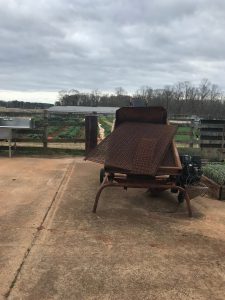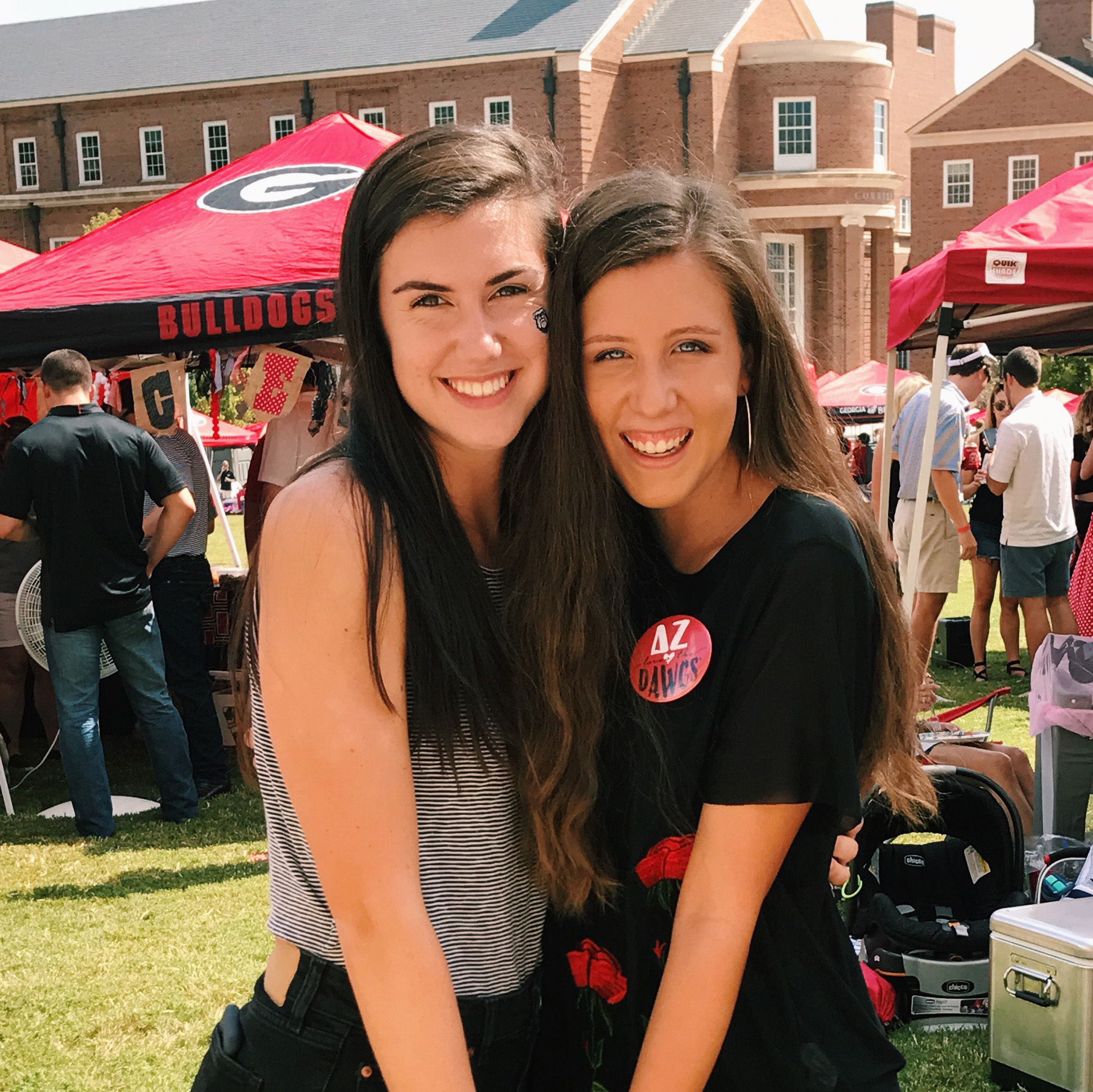For my service outreach project, I worked with AP Environmental Science students from Clarke Central High School to examine the number of antibiotics found within samples of Athens-Clarke County soil.
The project began with both myself and the Clarke Central students collecting soil samples from different areas of the country. The samples were then diluted and plated on Petri dishes and incubated for 72 hours. Each plate was examined, and those with between 30-300 colonies of bacteria were counted. The UGA students examined their own samples and counted the colonies and the process that was repeated with the Clarke Central students and their samples. The data found was then recorded on the PARE national database. The goal of the experiment was to determine the number of antibiotic-resistant bacteria living in the soil and report the number to PARE’s (Prevalence of Antibiotic Resistance in the Environment) national database. With the increasing number of antibiotics being used and abused, there are growing concerns over the number of bacterial strains that are becoming resistant to antibiotics. The PARE project seeks to monitor the number of “antibiotic-resistant organisms in the environment” and provide a “low hurdle pathway for instructors to begin implementing research in their classrooms,” according to the project’s website. Antibiotic resistance is a topic that not many of the general populace is aware of, and without educators and communicators providing the resources to share the research and results, the problem will continue to grow. As a Graphic Design major, I hope to have the ability to work with the Advertising Council and other non-profits to communicate the research with the general public.
These three characteristics: intellectually stimulating, relevant to the audience, and creativity are not normally associated with research projects regarding soil samples and bacteria. However, I believe our team of students were successful in incorporating all three into the Clarke Central students’ experience. The students were given an opportunity to examine material they themselves held an interest in, as many of the samples came from their own backyards. The results of the research had a direct connection and impact on the students, which provided motivating and intellectually stimulating results. Furthermore, it provided the students with an opportunity to work alongside university students, allowing them to connect and engage with them in ways they otherwise might not have been afforded. I know personally, I would have been more intrigued by the idea of testing soil samples if I had the opportunity to partner with university students in order to do it. The activity was an engaging and creative idea centered on engaging high schoolers with college students and providing each group with knowledge not only about antibodies within soil but also about each other.
The first discovery I made was about my own personal self-confidence when addressing others in subjects that I do not particularly feel the utmost confidence in. As an art major, science has never been my strongest subject, and oftentimes the subject proves more confusing than engaging. However, in an effort to communicate with the high school students, I was able to not only further my own engagement but theirs as well. Educating others about subjects increases my own knowledge of the subject, and the trip to Clarke Central proved no different. In terms of technology, it was clear that cell phones and laptops proved both a hindrance and an advantage. Without them, we would not have been able to input the research into the database. However, due to the nature of the assignment, it was hard to keep the entire group focused and engaged when the work was only being completed on one device. It might’ve proved more effective if the groups were smaller, to promote better interaction between the students and the research.
In all honesty, we weren’t given an opportunity to analyze our audience before jumping straight into the project. Therefore, I wasn’t able to pre-plan for the experience. However, I used my knowledge of high schoolers, and my own recent experience, to provide me with an initial starting point. Once we began the research, I was able to get a better gauge of the students’ interests and strengths. It was clear that some students were more engaged than others, and some even more so than myself. As I am pursuing a major that hinges on creating clear, effective communication channels, it was vital for me to adapt quickly to the needs of the students. Each audience has special needs, interests, and motivations, and in order to be an effective communicator one must recognize this and adapt.
If given the opportunity, I would have improved my own knowledge of entering the data onto the PARE site. I feel I was unconfident in the area, and that translated into the experience for the students.
This experience assisted me in learning the course material due to the added nature of teaching other students about the reasoning and importance behind testing for antibiotic resistance within the soil. In terms of audience analysis, I was able to gauge how well the students were learning the material, and I was able to adapt the conversation to answer any questions they might’ve had about the material, furthering my own knowledge on the subject. Without understanding the reasoning behind the numbers, the students would not have been able to understand the true gravity of the information they were contributing to the PARE database, thus it was important that I helped to connect the information gap. Their feedback allowed me to better answer any questions they might’ve had.
Again, as a future communicator, I hope to utilize the communication values I have learned further down in my line of work. Analyzing audiences and adapting to their needs are vital, and even though the information being communicated was centered around subjects I probably won’t engage with further, the basic values are still important.
I believe I came across as informative and approachable, which were my two goals for the experience. I hope I served as a resource for the high school students and allowed them to get a glimpse of what being a “real” college student looks like. I would like to work on my own knowledge of a subject before attempting to further educate others about it.
The assignment was an effective way for me to further engage with the experiment regarding antibiotic bacteria with the Athens-Clarke County soil. Not only was I able to further my own understanding by teaching others, but I was also given an opportunity to practice my communication skills.




